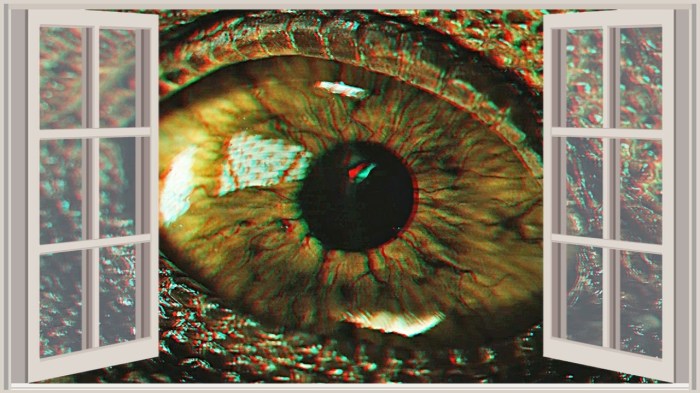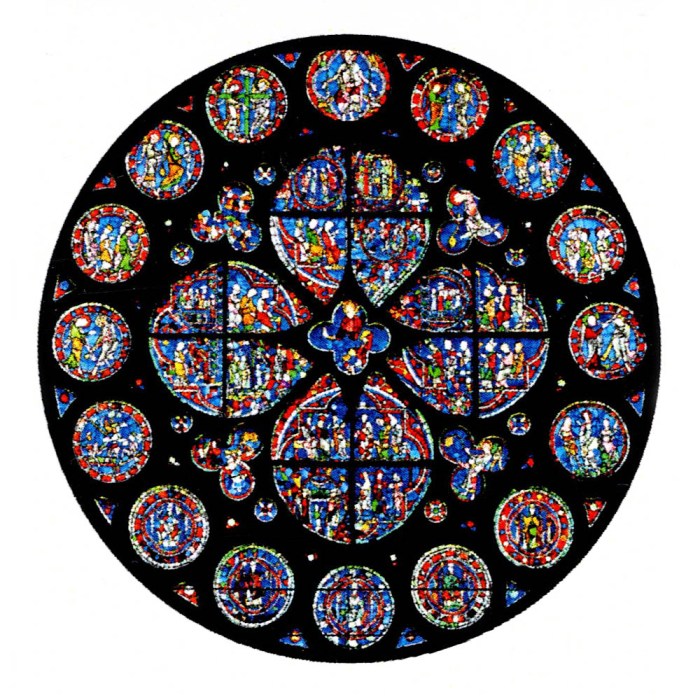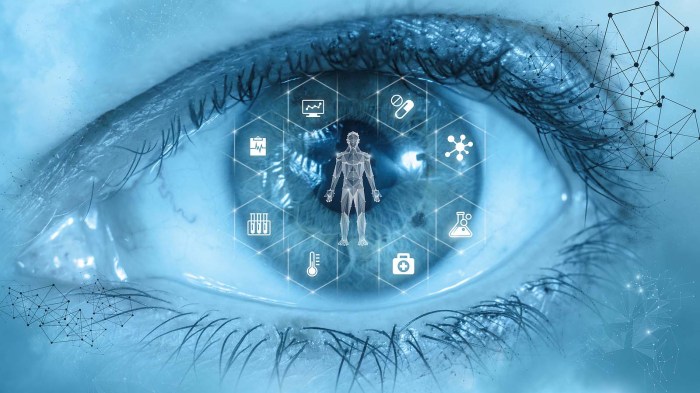What is the window of the eye? It is the transparent front part of the eye that allows light to enter and reach the retina, where images are formed. Composed of the cornea, pupil, and lens, this intricate structure plays a crucial role in our ability to see the world around us.
The cornea, the outermost layer, acts as a protective shield, while the pupil, a black circular opening, controls the amount of light entering the eye. The lens, a flexible structure, fine-tunes the focus of light onto the retina, ensuring clear vision at various distances.
Definition of the Window of the Eye

The window of the eye is the front part of the eye that allows light to enter. It is made up of the cornea, the pupil, and the lens.
The cornea is the clear, dome-shaped outer layer of the eye. It helps to focus light on the retina, the light-sensitive tissue at the back of the eye. The pupil is the black hole in the center of the iris, the colored part of the eye.
It allows light to enter the eye and reach the lens.
The lens is a clear, flexible structure that sits behind the pupil. It helps to focus light on the retina. The lens changes shape to focus on objects at different distances.
Functions of the Window of the Eye, What is the window of the eye
- The window of the eye allows light to enter the eye.
- The cornea helps to focus light on the retina.
- The pupil allows light to enter the eye and reach the lens.
- The lens helps to focus light on the retina.
Role of the Window of the Eye in Vision

The window of the eye plays a crucial role in facilitating the entry of light into the eye, a vital step in the process of vision. It comprises the cornea, pupil, and lens, working together to ensure clear and focused vision.
Light Entry and Refraction
Light enters the eye through the cornea, a transparent dome-shaped structure at the front of the eye. The cornea bends, or refracts, light as it passes through, initiating the process of focusing the incoming light. The pupil, the black circular opening in the center of the iris, regulates the amount of light entering the eye.
The lens, located behind the pupil, further refracts and focuses the light onto the retina, the light-sensitive tissue at the back of the eye.
The window of the eye, also known as the cornea, is a transparent outer layer that covers the front of the eye and helps to focus light. Interestingly, a legal battle between Clover and Snowbird ski resorts centered around the issue of skier safety on the slopes.
Just like the cornea protects the delicate inner structures of the eye, safety measures on ski slopes are crucial to prevent injuries and ensure a fun and safe skiing experience.
Importance for Clear Vision
The window of the eye is essential for clear vision. The cornea’s ability to refract light accurately helps form a sharp image on the retina. The pupil’s role in controlling light intensity ensures that the retina receives an optimal amount of light for proper visual perception.
The lens’s ability to fine-tune the focus allows us to see objects clearly at varying distances. Together, these components work harmoniously to provide us with the gift of clear and detailed vision.
Common Conditions Affecting the Window of the Eye

The window of the eye, consisting of the cornea, pupil, and lens, can be affected by various conditions that impair vision or cause discomfort. Here are some common conditions that affect each component of the window of the eye:
Conditions Affecting the Cornea
The cornea, the transparent outermost layer of the eye, can be affected by several conditions, including:
- Corneal Ulcers:Open sores on the cornea caused by bacterial or fungal infections, often resulting in pain, redness, and impaired vision.
- Corneal Abrasions:Scratches or scrapes on the cornea’s surface, typically caused by foreign objects or trauma, leading to discomfort, blurred vision, and potential scarring.
- Corneal Infections:Infections of the cornea caused by bacteria, fungi, or viruses, causing symptoms like pain, redness, swelling, and reduced vision.
Conditions Affecting the Pupil
The pupil, the black circular opening in the iris, can be affected by conditions that alter its size or shape, including:
- Dilated Pupils:Enlargement of the pupils, often caused by medications, certain drugs, or neurological conditions, resulting in increased sensitivity to light and blurred vision.
- Constricted Pupils:Narrowing of the pupils, commonly caused by bright light, certain medications, or neurological disorders, leading to reduced light entering the eye and potentially impaired vision.
- Anisocoria:Unequal pupil sizes, often indicating an underlying neurological or medical condition that requires further evaluation.
Conditions Affecting the Lens
The lens, a transparent structure behind the pupil, can be affected by various conditions that impair its ability to focus light on the retina, including:
- Cataracts:Clouding of the lens, commonly associated with aging or certain medical conditions, resulting in blurred vision, glare, and reduced color perception.
- Presbyopia:Age-related loss of the lens’s ability to focus on near objects, leading to difficulty reading or performing close-up work.
- Astigmatism:Irregular curvature of the cornea or lens, causing blurred or distorted vision at all distances.
Treatment Options for Window of the Eye Conditions
Treating window of the eye conditions depends on the underlying cause and the severity of the condition. Treatment options may include medications, surgery, and laser therapy.
Corneal Conditions
Treatment options for corneal conditions may include:
- Medications:Antibiotic or antiviral eye drops or ointments to treat infections.
- Surgery:Corneal transplant to replace a damaged or diseased cornea.
- Laser therapy:Photorefractive keratectomy (PRK) or laser-assisted in situ keratomileusis (LASIK) to reshape the cornea and correct vision.
Pupil Conditions
Treatment options for pupil conditions may include:
- Eye drops:Miotics to constrict the pupil and mydriatics to dilate the pupil.
- Medications:Oral medications to treat underlying conditions, such as Horner’s syndrome.
- Surgery:Pupilloplasty to repair a damaged pupil or iridotomy to create a new opening in the iris.
Lens Conditions
Treatment options for lens conditions may include:
- Surgery:Cataract surgery to remove a clouded lens and replace it with an artificial lens implant.
- Lens implants:Intraocular lenses (IOLs) to correct refractive errors or presbyopia.
- Laser therapy:Laser cataract surgery or laser lens reshaping to treat cataracts or correct vision.
Prevention and Maintenance of Window of the Eye Health: What Is The Window Of The Eye

Maintaining the health of the window of the eye is crucial for preserving good vision. Here are some preventive measures and tips for maintaining optimal eye health:
Protection from Damage
- Wear sunglasses:Sunglasses shield the eyes from harmful ultraviolet (UV) rays, reducing the risk of cataracts, macular degeneration, and other eye conditions.
- Avoid eye injuries:Wear protective eyewear when participating in activities like sports or working with hazardous materials to prevent injuries.
- Maintain good eye hygiene:Regularly wash your hands to avoid introducing bacteria or other irritants into the eyes.
Regular Eye Exams
Regular eye exams are essential for early detection and treatment of window of the eye conditions. These exams allow eye care professionals to assess the health of the cornea, lens, and other eye structures, and detect any abnormalities or signs of disease.
Maintaining Good Eye Health
Adopting healthy lifestyle habits can contribute to maintaining good eye health:
- Balanced diet:A diet rich in fruits, vegetables, and whole grains provides essential nutrients for eye health.
- Adequate sleep:Sleep deprivation can lead to dry eyes and other eye problems.
- Avoid smoking:Smoking damages the blood vessels in the eyes, increasing the risk of eye diseases.
FAQ Guide
What is the function of the cornea?
The cornea protects the eye and helps focus light onto the retina.
What causes dilated pupils?
Dilated pupils can be caused by dim lighting, certain medications, or medical conditions.
What is a cataract?
A cataract is a clouding of the lens that can impair vision.